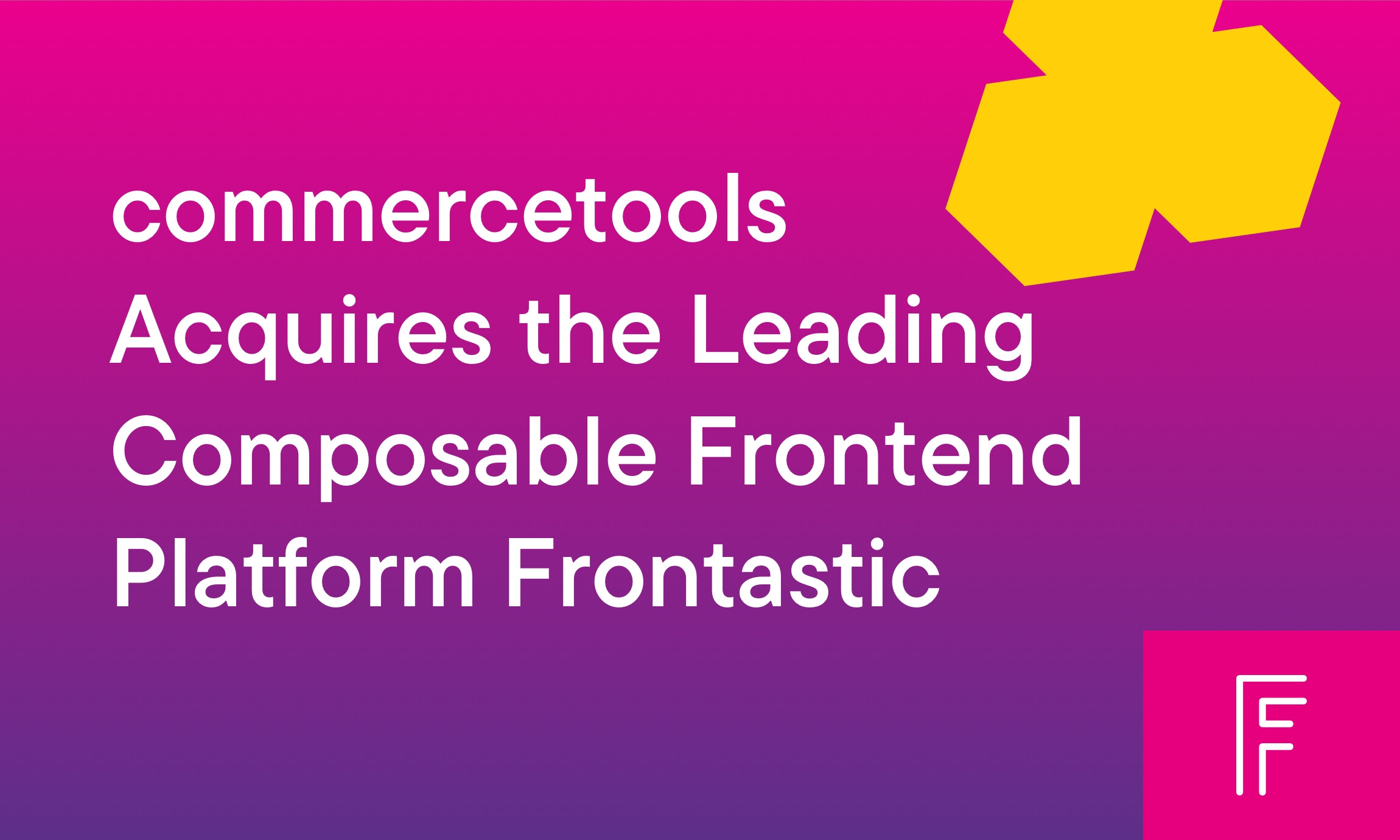
First acquisition post Series C funding will help merchants accelerate move to modern commerce
MUNICH (Germany), Nov. 19, 2021 – commercetools, the pioneer of the headless commerce movement, today announced the acquisition of Frontastic, makers of the Composable Frontend Platform that allows brands and retailers to create outstanding shopping experiences across multiple channels. The acquisition comes after commercetools announced its Series C funding round in September as the company focuses on broadening the reach of its game-changing commerce technology for creating differentiated user experiences.

Frontastic provides modern frontend technologies for better commerce sites. Dubbed a Composable Frontend Platform, it enables brands and merchants to quickly build unique experiences and lets enterprises enter new markets and launch products faster without needing herds of developers. It is used by international brands such as Universal Music, Flaconi and APG & Co.
We’ve been partnering with the Frontastic team since the very beginning and see a huge market opportunity for their Composable Frontend Platform around the world. With this powerful combination, we’re bringing the MACH (Microservices, API, Cloud and Headless) movement to the mid-market as well as to digital business teams so that more companies can benefit from modern commerce experiences.
CEO and Co-Founder, commercetools
We’re excited to become part of the impressive commercetools growth story. We created Frontastic to help enterprises build the best shopping experiences – regardless of which commerce platform they use. By joining forces with commercetools, we can support even more brands on a global scale.
CEO and Co-Founder, Frontastic
commercetools, which made the exclusive 2021 list of unicorn companies recognizing privately held companies worth over $1 billion, has experienced accelerated growth in the past year with recent customer wins including Alcon, Debenhams, Direct Wines, Inc., Express, Inc., The LEGO Group, L.L. Bean, Screwfix (a Kingfisher Group company), Volkswagen Group and Zenni Optical. With the addition of the Frontastic Composable Frontend technology to the company's product line, commercetools is building a broader portfolio of commerce technology services to support global enterprises and reinvent ecommerce.
Get Started with Composable Commerce TodayAbout Frontastic
Founded in 2017, Frontastic is a Composable Frontend Platform that unites business and development teams to build amazing commerce sites on headless fast. It connects to any API to unify tech landscapes and provides the necessary tools so commerce teams can focus on innovating new features. Within a short time, the company has successfully established itself as the new standard for commerce frontends with its customers seeing up to 50% higher conversion rates and up to 50% faster time to market.